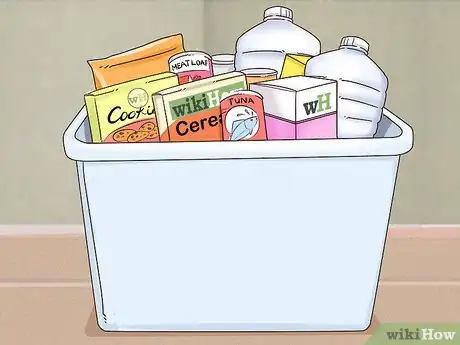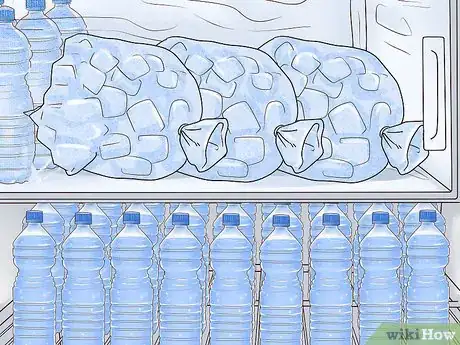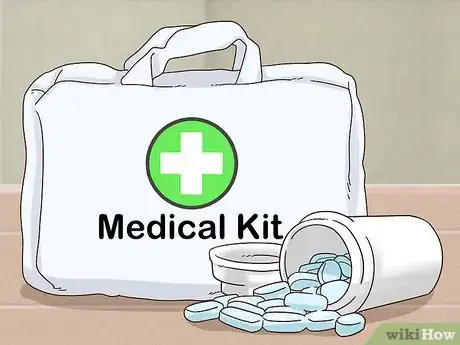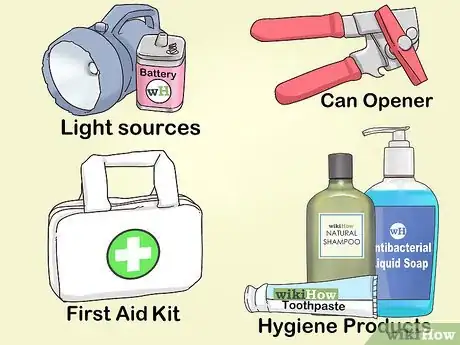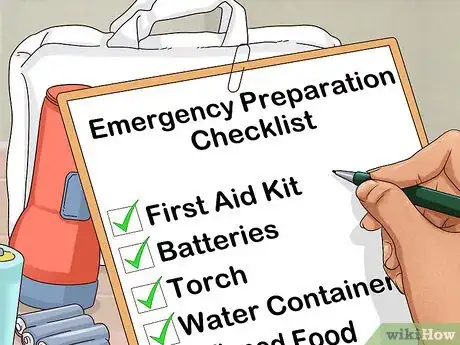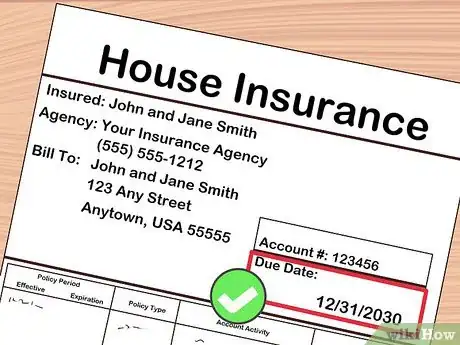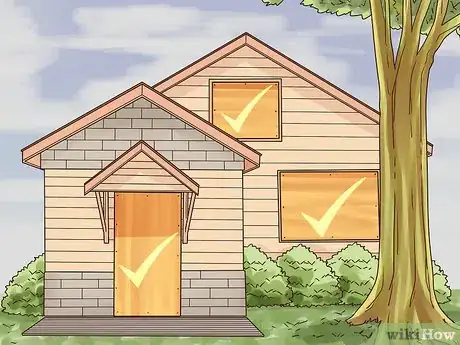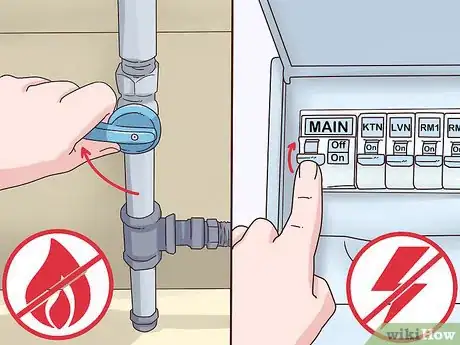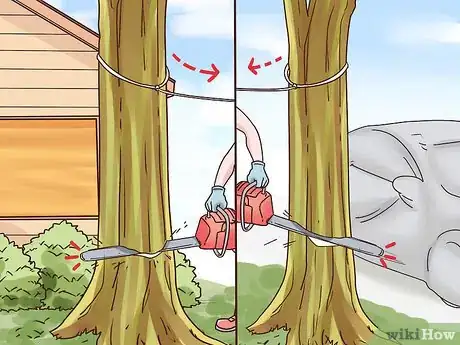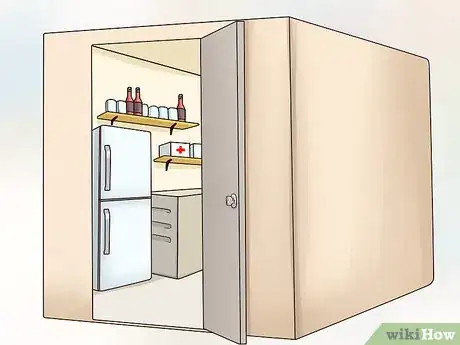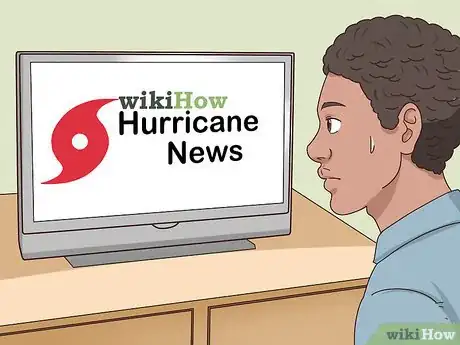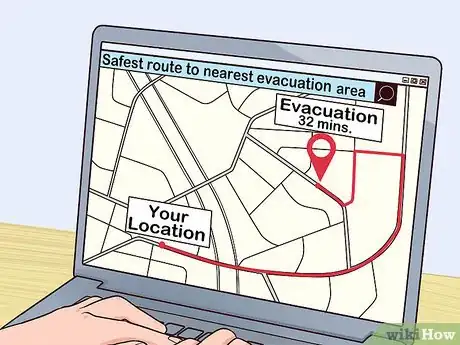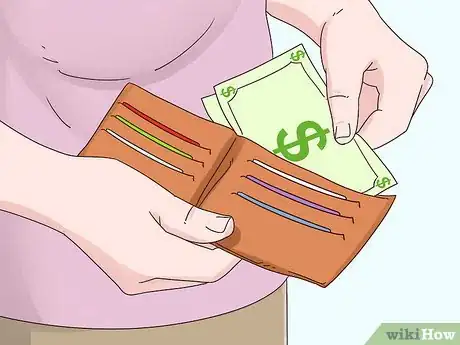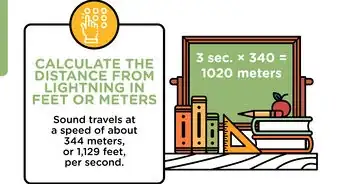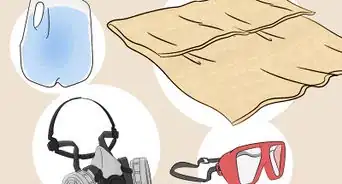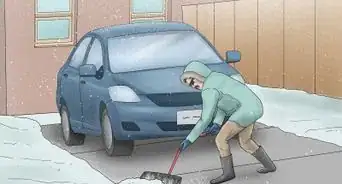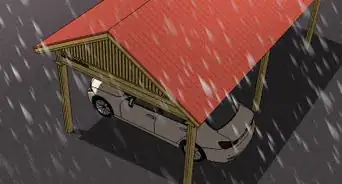This article was co-authored by Direct Relief. Direct Relief is an award-winning humanitarian aid organization, active in all 50 states and more than 80 countries. They focus on helping people affected by emergencies and natural disasters. Direct Relief has been highly rated by Charity Navigator, GuideStar, and the Center for High Impact Philanthropy at University of Pennsylvania, for their effectiveness, efficiency, and transparency.
There are 19 references cited in this article, which can be found at the bottom of the page.
wikiHow marks an article as reader-approved once it receives enough positive feedback. This article received 18 testimonials and 88% of readers who voted found it helpful, earning it our reader-approved status.
This article has been viewed 601,531 times.
Hurricane season can be a nerve-racking time for everyone. Hurricanes are not only a concern for those whose homes are in the path of one, but for relatives and friends who may worry about those in the storm’s path. Preparedness is essential for dealing with the physical challenges of hurricane season, and it will help you and your loved ones keep peace of mind.
Steps
Building a Disaster Kit
-
1Buy enough food and water to last a few days. Canned food is the only kind acceptable for an event such as a hurricane; again, check the expiration dates to make sure the food is fresh. Always have these supplies on hand so that you can respond whenever an emergency arises.
- Try getting canned food that doesn't require any added water or milk, such as Progresso.
- Fill up the bathtub with water if you decide to stay home. An average bathtub full of water holds enough water for about three days. It also makes it possible to flush the toilet using a bucket.
- There is a lot of water in the hot water heater of your home. An average 150-liter water heater has enough water to keep a single person alive for a month. See here for details.
- An average person needs about 3.5 l of water (one gallon) per day. Pets (dogs) need about 1.75L of water per day. Cats need much less water.[1]
-
2Prepare your fridge and freezer. Do this as the storm enters your area and you settle down for the long haul. Eat perishables first in anticipation of the power going out. Fill your fridge and freezer with bottled water and sealed non-perishable items. The more full your freezer is, the more items there are to retain the cold and keep the overall temperature down. The same applies to the refrigerator.
- Store as much water and fluids as you can in your fridge so that if the power goes out, it will retain the cold longer; hopefully in time for the power to turn back on.
- Put all the ice that you have in your freezer into plastic bags. Fill all spaces in your freezer with bags of ice. Freeze water bottles, too.
- See How to keep foods frozen during a power failure for more details.
Advertisement -
3Have your prescription medication. Be sure that you are well supplied with any prescription drugs that you or your family takes on a regular basis. Some insurers will not honor refills until the last refill is nearly used up or has run out. If necessary, drugs must be purchased without insurance; weeks may go by without the ability to get refills, putting your health at risk. If you’re in hurricane season, always have extra medication just case a storm comes in and all the pharmacies close down.[2]
-
4Make sure that you have the necessities. Have the supplies to make it through if you and your family are trapped in your house for a week without access to electricity, running water, and stores. These materials include things such as light sources (powered by battery or hand crank), a manual can opener, a first aid kit, a NOAA-compatible radio, and hygiene products.[3]
- Print out a medical aid guide so that you know how to administer proper care if the situation arises.
-
5Take your supplies with you. Many supplies in the disaster kit can be taken if you choose to evacuate by car. There will need to be smaller portions of food and water because of the lack of space in the transport. But there are some extra things you’ll need if you drive away from the storm.
- Flares
- Physical maps
- If you drive an electric car, mark charging station locations on your map
- Jumper cables
- Extra cans of gas
-
6Check your disaster kit every few months. This is to ensure the supplies you’ve stocked in case of emergency are both well stocked and fresh. You don’t want to find yourself faced with an emergency and figure out that you’re not prepared to face it.[4] Keeping a checklist that has all the items categorized and dated helps with this process.
- Inflate airbeds to ensure they don't need patching or replacing.
- Use a battery tester so you know all your stored batteries still have a full charge.
Fortifying Your Home
-
1Ensure that your house insurance is up to date. Hurricane season is not the time to buy flood insurance since it's either unavailable or outrageously expensive. Most regular home insurance does not include flood coverage in the policy, so you'll have to buy this separately. Just in case the hurricane does do major damage to your home, this will ensure that you’ll be ready and able to rebuild once it’s all over.[5]
-
2Secure your windows. Close all of your doors and windows. If you don’t own hurricane shutters, board up your home’s doors and windows with plywood. This will secure them so that it’s harder for the wind and rain to damage your property. It’s also a good idea to reinforce the garage doors so that everything in there is protected as well. [6] You want to do this as soon as you hear that the hurricane is headed your way so that you’re not outside when the storm is picking up.[7]
-
3Learn how to turn off the gas and power to your home. Make sure that all tools needed for the job are easily accessible. If you're not sure how to do this, speak with the gas or electric company for instructions. When the storm hits, you want to be able to enact all necessary safety procedures. Be sure to listen to officials during this time in regards to turning your utilities on and off.[8]
-
4Cut down trees and branches close to your house and car. If a large tree falls onto your house, it can punch a big hole in the roof. If a large tree falls onto your car it can easily be crushed flat. Remove dead trees and brush. Have an arborist remove dead trees and dead tree limbs and evaluate the health of any trees near enough to fall on your (or your neighbor's) house. [9] You want to do this before hurricane season, which is at the beginning of June.[10]
-
5Purchase a generator. If your family does have special health or medical needs, or you absolutely must have air conditioning, be prepared to pay more for a generator that can handle it. Search the web for generator wattage calculators to make sure you don't buy more generator than you need.[11] [12]
- Purchase several 5-gallon gas cans. Fuel is usually scarce after a hurricane, and many stations even limit the amount of gas you can purchase after waiting in line.
- If you are unable to purchase a generator, buy a DC to AC converter for your car. With it you will use your car as a portable electric generator. They cost $25 to $100 and are available in the automotive section of department stores. You will need a heavy-duty extension cord to run the power into your house.
- Do not run the car or any gasoline generator in the garage because carbon monoxide poisoning is very lethal.
- Some electric vehicles (i.e. Ford F-150 Lightning) have onboard AC power, and can power a house for many days off the EV battery.
-
6Designate a "safe room.” This is in case your home's integrity is compromised. The "safe room" should have no windows or exterior doors and preferably only one interior door. This will be a place for you and your family to retreat to if the storm becomes too severe. Make sure to have some supplies already in this space just in case you aren’t able to make more than one trip when retreating here.[13]
Making a Family Plan
-
1Stay on top of the news. How often you watch the Weather Channel is up to you, but if you start to feel overwhelmed or panicky, turn it off. Keep in mind that many hurricanes are slow movers. Once you hear about it, chances are you have several days to finalize your plans. Avoid letting your guard down or taking things too leniently, however, as hurricanes have been known to pick up speed or shift course unexpectedly. Being aware of the forecast will allow you and your family to plan for the worst and be prepared for it.[14]
-
2Find the local evacuation routes. Check the websites of your local city and state to find information on what roads they advise people to use in the case of escaping from a hurricane zone. Make sure to check all the options they provide to see which ones would work best. Plan on using a few since you might not be leaving your home if the storm comes in fast.[15]EXPERT TIPDirect Relief is an award-winning humanitarian aid organization, active in all 50 states and more than 80 countries. They focus on helping people affected by emergencies and natural disasters. Direct Relief has been highly rated by Charity Navigator, GuideStar, and the Center for High Impact Philanthropy at University of Pennsylvania, for their effectiveness, efficiency, and transparency.Humanitarian Aid Organization

 Direct Relief
Direct Relief
Humanitarian Aid OrganizationDirect Relief, Humanitarian Aid Organization, advises that you "fill up your car with gas before evacuating, as shortages in supplies and excess demand can limit one's ability to fill up the car once a hurricane hits."
-
3Discuss and practice the disaster plan. Make sure everyone in the family knows who to contact and how to get a hold of them as an out of area contact. If anyone somehow becomes separated, you want to make sure that every family member knows where to go to get to safety.[16]
-
4Inform your kids. Make sure they know enough information so that an adult can get in touch with that person should sudden evacuation be necessary when you aren't near them. If you have young children, write important contact information on an index card and give it to them in case they are somehow separated from you.
- If your older children have cell phones, make sure that your contact information and any other emergency numbers are programmed into their contact list.
-
5Plan the location that you will evacuate to. This may be the home of the friend or family member you made plans with. Talk with them beforehand and make sure that they will be in town around the time that the hurricane is supposed to hit. Be sure to research where the nearest shelters just in case you have to find shelter immediately. [17]
- You should evacuate if:
- You live in a mobile home or RV. They are unsafe even in a Category 1 storm.
- You live in a high-rise building. Winds are stronger at higher altitudes, and this will cause the building to sway.
- You live in an area prone to storm surge or flash flooding. Check that the house will not flood by storm surge and/or waves.[18]
- You should evacuate if:
-
6Keep a physical copy of the emergency plan. Memories can deteriorate over time, especially of things that aren’t used in day-to-day activities. Once you and your family create a plan in case of a hurricane, write it down. Record every step, location, and supply so that members of the family can review it every few months to keep it fresh in their minds. This way, when a hurricane draws near, everyone can go over the premade plan instead of trying to remember every detail from scratch.
-
7Save a little money. Put some money away for emergency use in the case of a hurricane. After the storm has run its course you can use this money to start fixing everything back up that wasn’t covered by insurance. You can also give this money to friends, family, or neighbors that might not have had insurance; they will definitely appreciate the help.
Warnings
- Don't get confused when the eye of the hurricane passes over. It might trick you into thinking the storm is over.⧼thumbs_response⧽
- You should not think twice about leaving if: (a) you are under a mandatory evacuation order; (b) a Category 3–5 hurricane is likely and you are within 100 miles of shore; (c) you live in a manufactured home or camper and a hurricane of any strength is on its way to you; or (d) you cannot shutter or board-up your home.⧼thumbs_response⧽
- Remember, hurricanes can strike anywhere from the Caribbean to the Eastern coast of Canada.⧼thumbs_response⧽
- Heed all directions of both the Red Cross and government officials.⧼thumbs_response⧽
- The slower a hurricane moves, the more likely it'll be to include heavy rain, possibly causing floods. If a hurricane is likely to move very slowly and you live in a valley, head for higher ground. If the hurricane is moving very quickly, most of the damage will be wind-related.[20]⧼thumbs_response⧽
- At higher latitudes, hurricanes sometimes become "post-tropical storms". In no way does this imply that the impacts have changed, it simply means that they derive their energy from a different source.
Things You'll Need
- "Self Powered Lights" and "Self Powered Radios." This equipment is either solar-powered and/or has a "crank up" generator built into the light and the radio. This will save you money on batteries. Some of these models will also charge mobile phones.
- Glow sticks or flashlights. Safer than candles, in case there are gas leaks, explosive, flammable chemicals in your area.
- Solar-powered garden lights. You can charge them up in the sun by day and use them indoors for lighting at night.
- Canned goods and can opener, fruits and vegetables, and other foods that do not require refrigeration.
- Mobile phone, and extra charged external batteries. Solar chargers are useful for long term power outages.
- A DC to AC inverter.
- Pre-moistened towelettes.
- Battery-powered fans will be very useful if the power is out.
- Lots of batteries of all sizes (you can always use later what is not used during the storm). Consider buying a car battery to power battery-operated devices in the home.
- Plenty of large plastic garbage bags to dispose of human waste and other garbage.
- Supply of toilet paper and other toiletries as needed.
- At least one 5-gallon bucket and cat litter (the bio-degradable kind) for toilet use.
References
- ↑ http://www.mayoclinic.org/healthy-lifestyle/nutrition-and-healthy-eating/in-depth/water/art-20044256
- ↑ https://www.cdc.gov/disasters/hurricanes/supplies.html
- ↑ https://www.ready.gov/kit
- ↑ https://www.ready.gov/hurricanes
- ↑ http://cca.hawaii.gov/ins/hurricaneseason/
- ↑ http://www.homeadvisor.com/r/how-to-stay-safe-during-a-hurricane/#.WWUl8tPyufU
- ↑ https://www.ready.gov/hurricanes
- ↑ http://www.sua.com/hurricane-preparedness
- ↑ http://swa.org/153/Before-During-and-After-the-Storm
- ↑ https://www.livescience.com/57671-hurricane-season.html
- ↑ http://www.huffingtonpost.com/2012/11/08/whole-house-generators-hurricane-sandy_n_2076771.html
- ↑ http://www.consumerreports.org/generators/generators-for-hurricane-season/
- ↑ https://www.ready.gov/hurricanes
- ↑ http://www.redcross.org/get-help/how-to-prepare-for-emergencies/types-of-emergencies/hurricane/hurricane-vs-typhoon#Similarities
- ↑ http://www.nhc.noaa.gov/prepare/ready.php
- ↑ http://www.redcross.org/get-help/how-to-prepare-for-emergencies/make-a-plan
- ↑ https://www.ready.gov/shelter
- ↑ http://brevard.floridahealth.gov/programs-and-services/emergency-preparedness-and-response/evacuate-or-stay-at-home/
- ↑ http://www.hurricanescience.org/society/risk/huricanesafety/
- ↑ https://nhmu.utah.edu/sites/default/files/attachments/Hurricane%20FAQs.pdf
About This Article
To prepare for a hurricane, plan for an evacuation in advance. Look up your designated evacuation route and shelter, and make a plan for each member of your household, including children, people with disabilities, and pets. Stock your home with emergency supplies, including enough food and water for a few days, flashlights, a first-aid kit, prescription medications, flares, and hygiene products. Keep some supplies in your vehicle in case of an evacuation, and make sure your vehicle has at least a half tank of gas. You should also take steps to protect your home and minimize damage from high winds and flooding. Move loose, lightweight objects, like outdoor furniture and trash cans, indoors. Cut back or remove trees that could potentially fall on your home. Clear gutters and drains of debris, and consider installing check valves in your sewer lines so floodwater doesn’t back up into the drains. Store important documents in a waterproof container to protect them from damage. Check your property insurance policy to see if it covers flooding and consider buying flood insurance if it doesn’t. You should also sign up for local emergency alerts and warnings so you can stay informed before, during, and after a hurricane. By preparing in advance and taking the necessary precautions, you can keep you and your family safe when a hurricane hits. To learn how to make a family plan to stay safe during a hurricane, scroll down!
